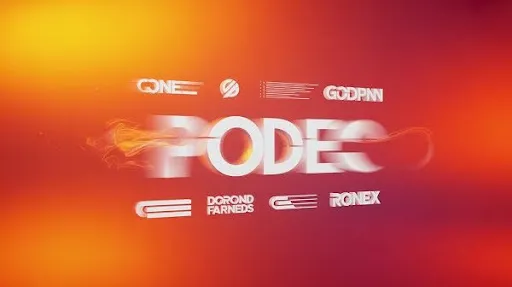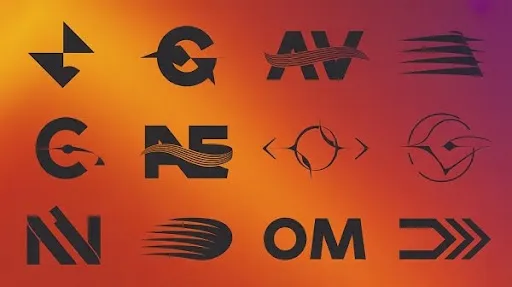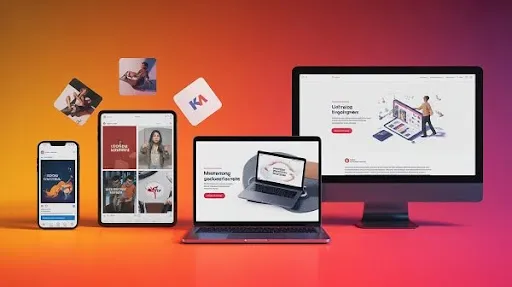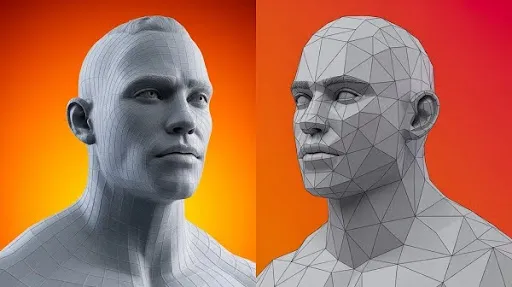Some brands look good on paper yet somehow lose their spark the moment they show up on a screen. The colors remain bold. The logo looks polished. The typography is clean. Still, something feels missing. The identity doesn’t land with the punch it should. Motion branding steps into that gap and brings the missing spark back into the picture.
Every feed today is loaded with videos, short clips, animated ads, and scroll-stopping visuals. Static graphics often fade into the background before people even register them.
Movement grabs attention instantly, so brands that rely only on still visuals fall behind without noticing. That’s why studios like Prolific Studio treat motion branding as a key layer in the branding process instead of a finishing touch.
The growing demand for motion didn’t appear overnight. It picked up momentum because people now consume most content through screens that expect movement. Smooth transitions, animated logos, shifting shapes, and kinetic typography have become part of modern brand language. When these elements line up, even a simple design starts to feel energetic and alive.
This breakdown walks through the nature of motion branding in an easy and practical way. No dramatic words. No generic lines. Just a clear value, explained simply.
What Motion Branding Really Means in Practice
Motion branding brings life to a brand’s visual identity. Instead of leaving logos, shapes, icons, and text frozen, it turns them into animated expressions that match the brand’s attitude. It turns still identity into behavior.
A logo might form through a single stroke. Letters might rise slowly, like they’re taking a breath. Shapes might stretch or slide across the screen. A small swoosh could add personality to a transition. Even a tiny sound cue can leave a strong impression if used consistently.
Motion branding isn’t centered on logo animation alone. It covers pacing, timing, sound design, and audio branding, camera-style movement inside 2D animation, color shifts, and how the brand appears inside product clips or ads. Once motion is built into a video marketing strategy, the brand starts looking more unified across every platform.
A still brand shows its look. A moving brand shows its character. That small difference changes how quickly people remember it.
Why Motion Branding Matters More Today Than Traditional Branding Alone
Traditional branding built strong visual foundations. Colors, typography, icons, patterns, all of that still matters. But the way audiences interact with brands has changed. Most people meet a brand inside short videos, ads, social content, reels, explainers, and animated stories. On these platforms, still designs feel slow and easy to skip.
Motion branding adds energy, clarity, and emotion. It grabs attention faster and keeps viewers focused long enough for the message to land. A static post might get ignored, but a dynamic branding moment often stops the scroll for just long enough to spark curiosity.
People swipe through endless content every day, and movement is the first thing their brain reacts to. That instinctive reaction gives motion graphics a natural advantage in brand recall.
Brands that adopt motion early tend to look modern and confident. Those who avoid it eventually feel dated, even if their design is technically strong.
The Nature of Motion Branding: More Than Just “Making Things Move”
Motion branding has rules and intention behind it. It’s not about adding random animations just to make a design look busy. Every movement should reflect tone and personality.
- A gentle fade feels calm.
- A sharp cut feels bold.
- A slow spin feels reflective.
- A quick bounce adds friendliness.
- Timing alone can change a message entirely.
Motion branding also establishes its own guidelines, just as traditional design manuals do. These guidelines describe:
- Speed and timing
- How transitions should work
- Where easing applies
- The tone of sound cues
- How the logo enters and exits
- What type of character animation fits
- How icons should behave
These rules build consistency. When a brand moves the same way across platforms, recognition becomes stronger, even before anyone sees the logo.
Key Elements of Motion Branding That Shape a Strong Identity
Motion branding depends on several moving parts. Each one supports the others to create a system that feels complete and expressive.
Dynamic Logos
Animated logos are usually the first asset built by a video animation agency or a 2D animation studio. A strong logo animation captures the brand’s voice in a few seconds. It doesn’t need to be dramatic. Even a small, thoughtful motion can lift the entire identity.
Consistency matters more than complexity. The logo animation becomes a signature moment for the brand.
Kinetic Typography
Moving text holds attention longer than static lines. Kinetic typography helps guide the viewer’s focus and highlights important parts of the message. The letters can stretch, shrink, tilt, slide, or shift. The goal is to match the brand’s motion rules without distracting from the message.
This style also makes short ads and social videos easier to follow, especially when viewers watch without sound.
Motion Graphics
Motion graphics build structure within animated content. They include shapes, icons, outlines, transitions, overlays, and UI-style visuals. These elements help explain ideas fast without relying on long sentences.
When used with a consistent approach, motion graphics strengthen the brand personality inside every video.
Dynamic Color Transitions
Colors express mood. When they shift, the mood shifts with them. Smooth color transitions help connect scenes and strengthen recognition. Viewers often link these transitions to a brand even before the logo shows up.
Sound Design and Audio Branding
Audio plays a much larger role in identity than most brands expect. A simple chime, beat, vocal cue, or short tune can make a brand instantly recognizable. Motion branding merges sound with visuals so that the brand leaves a complete sensory impression.
These moving parts work together to create an animation that feels intentional and unique to the brand.
How Motion Branding Fits Into the Branding Process
Motion branding doesn’t replace traditional design. It builds on top of it. Once the core identity is defined, brands move into the motion stage to build movement rules and animated assets.
This stage usually includes:
- Reviewing brand personality
- Studying existing design material
- Planning how the brand should move
- Testing animation styles
- Developing logo motion concepts
- Creating branded transitions
- Building motion graphics systems
- Crafting an audio identity
- Setting usage rules for content teams
A professional video animation agency or animation-focused studio has a clear animation process for these steps. This keeps the motion style aligned with the brand’s voice, instead of feeling disconnected or out of place.
Types of Animation Used in Motion Branding
Different animation techniques give brands different tones. The choice depends on personality and goals.
2D Animation
Clean, adaptable, and perfect for logos, icons, text, and explainers.
Frame-by-Frame Animation
Adds charm and a handcrafted appeal. Great for brands that want more warmth.
Vector-Based Motion Graphics
Ideal for scalable, minimal, modern visuals without losing detail.
Stop Motion
Unique and memorable, used mostly for playful or creative brands.
Mixed-Media Animation
Blends real footage with motion graphics for polished storytelling.
Each technique sets a different emotional tone, and studios pick the one that fits the brand best.
How Motion Branding Helps a Brand Stand Out in a Crowded Digital Space
People scroll fast. They barely notice design details, yet they notice how a message feels. That’s the part motion branding quietly controls. It gives direction, helps the eye move naturally, and makes information easier to digest.
A tiny animated nudge can change the entire mood of a logo. A clean transition between scenes can hold someone’s attention for a few more seconds. Even a quick movement in text can guide the viewer toward the point a brand wants to highlight. These small choices create a sense of polish that static visuals can’t replicate.
The real magic shows up when the same motion language appears again and again. Viewers begin to recognize a certain pace or rhythm. A familiar sound cue clicks in their head before they even see the full visual. That’s how brands build memory.
And that’s also why so many companies turn to a professional video animation agency instead of trying random edits. Motion branding is about being remembered, not just being noticed.
Real-World Places Where Motion Branding Does the Heavy Lifting
Motion branding shows up in more places than people realize. It quietly supports some of the most important customer touchpoints.
1. Social Media Content
Short-form content lives on movement. Reels, TikToks, animated carousels, or even story stickers carry motion cues that define a brand’s personality. A 2D animation studio usually prepares reusable bits, transition packs, animated shapes, and small text flourishes so the content team can drop them across different posts without losing consistency.
These tiny assets work like a stamp. Even if the topic changes, the brand’s look stays intact.
2. Marketing Videos and Explainers
Motion graphics services help simplify anything that feels overwhelming. Industries like healthcare or software rely on motion more than most because it helps teams explain complicated ideas quickly. A clear animation sequence can turn a heavy topic into something people actually understand.
When these videos follow the same motion structure, brands feel tight and organized even when multiple creators contribute.
3. Website and App Experiences
Digital interactions feel better when they move with intention.
- Buttons react with small pulses
- Icons expand just enough to catch the eye
- Menus open smoothly instead of snapping into place
These movements guide users without calling attention to themselves. The product feels easier to use, and that ease becomes part of the brand identity.
4. Product Packaging and In-Store Displays
Motion isn’t only for online content. In-store screens, rotating product visuals, and animated digital signage bring energy to physical spaces. Static posters can only say so much. A moving visual makes people stop for a moment, and that split-second pause can influence buying decisions.
5. Ad Campaigns and Commercials
Paid ads benefit a lot from motion branding. Even if someone skips the ad, the motion style plants a quiet memory. Over time, viewers recognize the brand without thinking. Familiarity builds trust, and trust leads to better performance across the entire video marketing strategy.
How a Professional Studio Builds a Motion Brand System
A strong motion identity comes from a clear process. It’s not random editing or copying trends. Animation studios build it step-by-step, and every step shapes the next one.
1. Understanding the Brand Personality
Before designing anything, the studio studies the brand’s tone, audience, and existing design system. They look at what the brand currently communicates and what it wants to communicate. This research helps define how the motion should feel: slow, energetic, playful, bold, minimal, smooth, or sharp.
2. Identifying Motion Principles
These principles act like house rules for movement:
- How fast things should move
- The kind of easing used
- How elements enter or exit
- Which directions feel natural
- If transitions stay soft or punchy
- The emotional weight of the movement
Once these rules are set, they guide every animation that comes later.
3. Developing the Logo Animation
The logo animation becomes the anchor for the entire system. Studios experiment with:
- Shape-driven builds
- Clean line reveals
- Kinetic typography
- Icon-led sequences
- Small storytelling moments
The final version captures the brand’s personality in a few seconds. It acts as a reference for all other movement choices.
4. Establishing the Motion Graphics System
This system includes the reusable parts:
- Lower-thirds
- Cut transitions
- Scene connectors
- Icon animations
- Overlays
- Typographic movement patterns
These pieces help teams create new videos quickly without losing the brand’s tone.
5. Creating Audio Branding
Sound plays a bigger role than people assume. A tiny chime or beat can stick in the mind more than a visual. Teams often create:
- A signature audio logo
- UI sound effects
- Soft background loops
- Short branded stings
Once paired with the motion system, audio becomes another layer of recognition.
6. Building the Motion Guidelines
All the pieces eventually get documented in a practical guide. It includes correct usage, visual references, templates, presets, and audio notes. This checklist helps future designers stay aligned, even if they weren’t part of the original project.
Why Brands Are Shifting More Budget Toward Motion
It’s not a trend; it’s a response to how people consume content now. Several simple reasons push brands toward motion-first identities:
- Social media boosts video content more than static posts
- Animated visuals are easier for the brain to absorb
- Motion helps deliver messages faster
- Brands want to look modern and polished
- Consistency in movement builds instant recognition
As attention spans continue shrinking, motion branding becomes a tool brands can’t ignore. It brings clarity to messages, keeps viewers engaged, and makes every touchpoint feel more intentional.
Frequently Asked Questions
What makes motion branding different from a regular logo animation?
A logo animation stands alone. Motion branding builds a complete movement language that applies to everything—transitions, typography, sound cues, pacing, and reusable motion assets.
Do small brands benefit from motion branding?
Yes. Smaller brands often see faster results because motion instantly boosts the sense of quality. Even simple animations can make a brand look more dependable.
How does motion branding help performance on social platforms?
Movement catches the eye quicker than static designs. It keeps viewers watching longer, highlights important points, and strengthens brand recall.
Is 2D animation enough for building a motion system?
Absolutely. Most motion identities start with 2D because it’s flexible, budget-friendly, and easier to apply across different formats.
How long does the process usually take?
Most studios finish it in a few weeks. It involves brand research, concept testing, logo animation, toolkit creation, and guideline development.
Final Words
Motion branding gives brands a way to communicate with clarity and style across every screen. It makes each message easier to follow and gives the identity a sense of life that static visuals can’t deliver on their own. When a brand invests in motion early, every video, post, and ad feels more intentional.
The result is stronger recall, better engagement, and a presence people remember long after they scroll away.
Related Articles:










